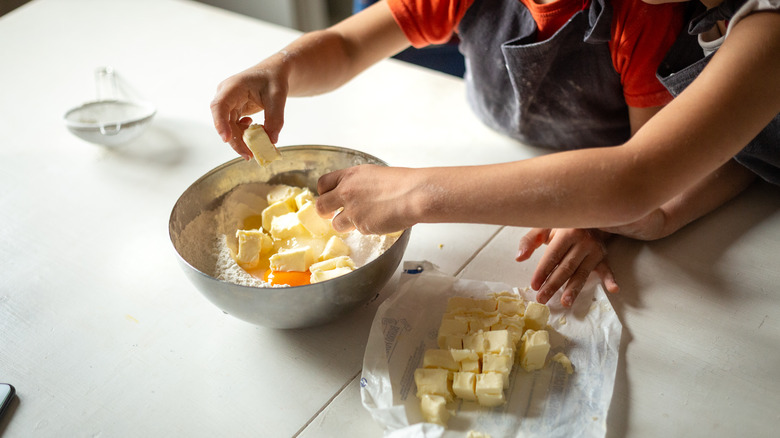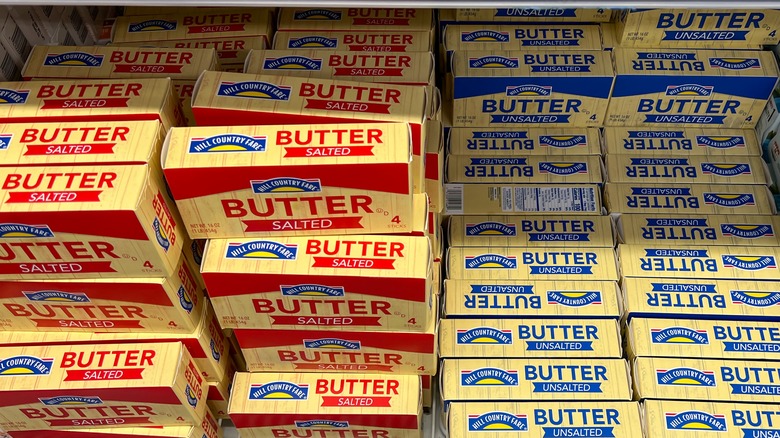When Do You Use Salted Butter Vs. Unsalted?
If you spend a lot of time in the kitchen, then you most likely have had a moment where you're cooking or baking and you reach for a stick of butter only to realize you have unsalted butter, but your recipe calls for salted butter. Or perhaps you have salted butter and your recipe says you need unsalted. This can make you worry that you don't have the right butter for whatever it is you're making, and may find yourself wondering if there's really that much of a difference between the two. Can you substitute salted butter with unsalted, or must you use only the one your recipe says you need?
Truthfully, there are many times the two types of butter are totally interchangeable, but you should know the differences and how they can impact your recipe. Once you understand how to use salted butter versus unsalted butter, you won't have to worry the next time you find yourself in a butter bind.
Substituting salted and unsalted butter
The main difference between salted and unsalted butter is, well — salt. Salted butter contains added salt, whereas unsalted butter does not. The amount of salt added to salted butter can vary depending on the brand, and some may have a saltier taste than others. Salted butter is commonly used in cooking, particularly in recipes where the salt content can enhance the flavor, and you don't have to measure the amount of salt you use. Of course, if you are using other spices and herbs, you can use unsalted butter for cooking and allow your other ingredients to bring in the flavor.
In baking recipes, though, there is usually a need for specific measurements, so using unsalted butter is recommended. This allows you to properly monitor the salt content and add just what you need. Plus, most baking recipes are sweeter than cooking, so it's better to use less salt for them. This doesn't mean you cannot use salted butter for baking, though. You would just simply skip out on adding salt to the recipe and allow the butter to bring in the salty flavor.
Using salted butter and unsalted butter
Outside of cooking, though, the two salts have some other uses, and choosing one over the other may change the flavor profile of what you are eating. Salted butter is a great way to bring out richer and fuller flavors in bread, and it's also good on saltine crackers for a slightly salty snack. Salted butter can be melted and used to flavor popcorn or roasted vegetables without having to add more salt, and you can create other flavors in the salt by adding herbs and garlic to it.
Unsalted butter is a key ingredient in buttercream frosting, and it shouldn't be substituted with salted butter because you want a sweet flavor for your frosting. Unsalted butter is often used to make clarified butter, which is made by melting the butter and separating the milk from the fat. Salted butter won't separate as easily, so it's not recommended for clarified butter. In terms of nutritional value, both types of butter have similar calorie and fat content, but the sodium level in salted butter is higher.


